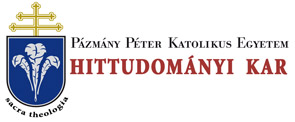Folia Canonica 8. (2005)
STUDIES - Szabolcs Anzelm Szuromi: The Changes of Modern Era Relation of Church and State in Europe
THE CHANGES OF MODERN ERA RELATION OF CHURCH AND STATE IN EUROPE 73 other Congregations living an apostolic life,46 the financial support of Church,47 or questions related to real and personal property of Church.48 We can find more wide-ranging ordinances than this in the German concordat of 1933 containing 34 Articles, which was signed by Eugenio Pacelli and Franz von Papén.49 The purpose of this concordat was to secure the free functioning of the Catholic Church inside Germany, as it is written in Article 1 explicitly. The validity of this document extends over Bavaria, Prussia, and Baden, with which provinces the Holy See already signed independent agreements earlier. The German state declares the Catholic Church’s free pastoral activities, free religious press, and undisturbed spiritual work.50 The agreement also touches upon the individual German diocese’s regional divisions and upon the criteria of establishing new dioceses.51 We can find further regulations about parishes,52 right of presentation,53 theological faculties operating in state universities,54 foundation and function of priestly seminaries,55 service of army chaplain,56 and priests working in public health institutions.57 Regarding activities of parochial schools, the agreement makes decrees so that those can operate as private schools and those are under the ordinance of prevailing public educational and budgeting legislation concerning private schools.58 59 The reviewed two examples properly characterize the peculiarity of condcordat’s form. At the same time the German concordat illumines that what kind of changes the official German politics goes through in the judgment of freedom of the Church and religion, which among other things led to the Mit brennender Sorge Encyclical Letter of Pius XI, published on March 14, 1937, condemning totalitarianism and racial theory. If we compare the two above mentioned international agreements to the text of the new Austrian concordat assembled after one and a half decade following World War II, the thematic 46 Art. X. AAS 26 (1934) 261. 47 Art. XI. AAS 26 (1934) 262-263. 48 Art. XIII. AAS 26 (1934) 264-265. 49 AAS 25 (1933) 389-413. 50Art. 4. AAS 25 (1933) 391-392. 51 Art. 11. AAS 25 (1933) 394-395. 52 Art. 13. AAS 25 (1933) 395-396. 53 Art. 14. AAS 25 (1933) 396-397. 54 Art. 19. AAS 25 (1933) 400. 55 Art. 20. AAS 25 (1933) 400M01. 56 Art. 27. AAS 25 (1933) 404-405. 57 Art. 28. AAS 25 (1933) 405. 58 Arts. 24-25. AAS 25 (1933) 402-403. 59AAS 52 (I960) 923-941.
